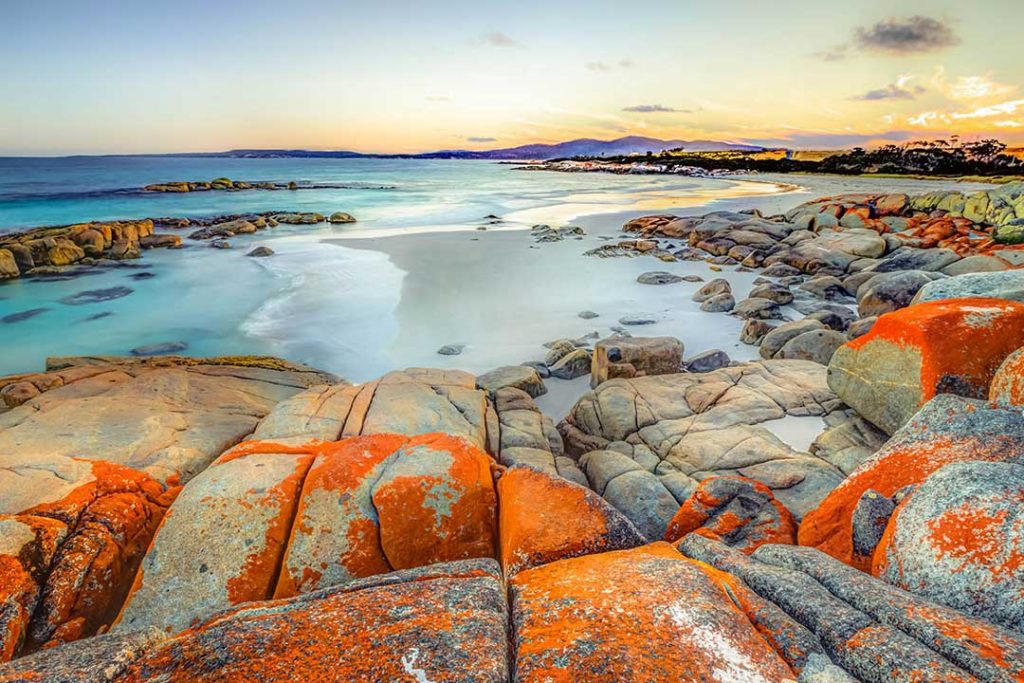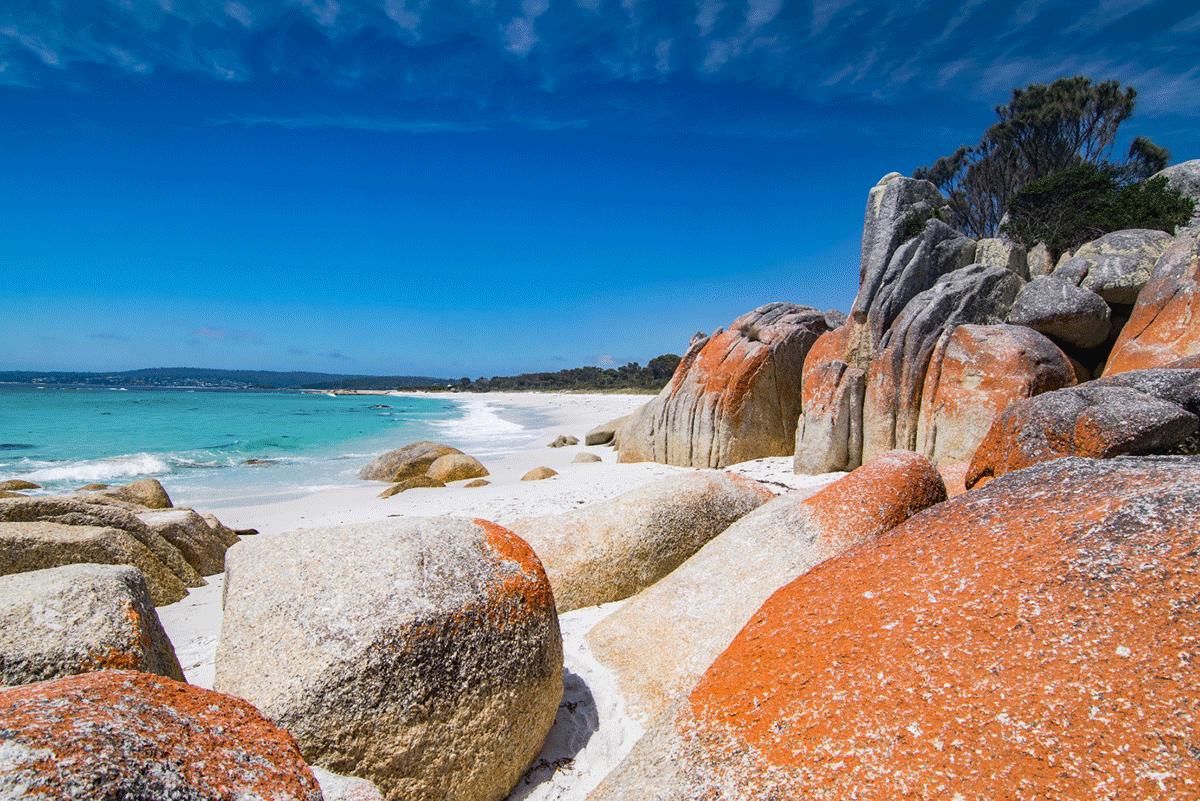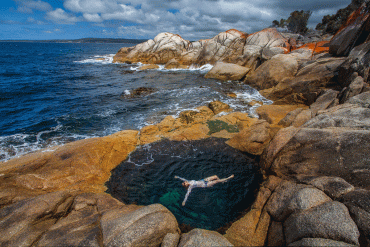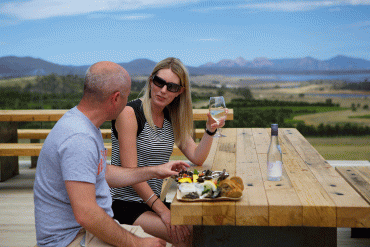The Bay of Fires is known all over the world for its extraordinary clear blue seas, brilliant white beaches and striking orange lichen-cloaked boulders. It inspires a string of superlatives from every person lucky enough to come here, and it’s one of the most idyllic holiday destinations imaginable.

Night sky at Bay of Fires
The Bay of Fires coastline stretches for 50 kms from Binalong Bay in the south to Eddystone Point in the north. Take the Great Eastern Drive to St Helens, and then follow the signs to reach this dramatically beautiful part of the East Coast. Factor in some time here, because it is truly incredible. Explore the vast white-sand beaches and turquoise seas between Ansons Bay and Eddystone Point or discover the many beaches like The Gardens, Jeanneret, Swimcart and Cosy Corner.
Its name refers to the Aboriginal fires spotted by Captain Tobias Furneaux when he sailed past in 1773, but it could also apply to the brilliant orange lichen that grows on the granite boulders lining the bay. There is still evidence of the lives of the first Tasmanian along the coastline, in the form of middens (where shell and bone are discarded).
The conservation area is divided into three sections, with Ansons Bay dividing the southern and northern ends. A scenic view of the bay can be glimpsed by driving along the coast to The Gardens.
The Bay of Fires area contains rocky gullies, with many small secluded beaches and inlets to explore. Binalong Bay is the area’s main beach – a beautiful stretch of white sand and clear water for swimming, snorkelling, surfing or simply relaxing.
You can explore the Bay of Fires from your base in St Helens or Binalong Bay, choose a campsite with a truly incredible view, or treat yourself to a luxury eco-lodge experience with the award-winning Bay of Fires Walk, or the new wukalina walk, a 4 day guided walk based around the magnificent landscape of the larapuna (Bay of Fires) and wukalina (Mt William National Park).

wulkalina Walk
There’s a wealth of local wildlife to discover, too, including birds that can be encountered on self-guided and guided walks. The area is renowned for game fishing, with numerous boat ramps. The offshore reefs contain rich marine biodiversity that attracts divers and snorkelers.
Getting there

Bay of Fires Eco Tours
Bay of Fires is approximately 4 hours from Hobart and 3 hours from Launceston. Binalong Bay is less than a ten minute drive from St Helens.
Where to stay

Bay of Fires
Accommodation is available in and around Binalong Bay, including remote eco-lodges. The coastal town of St Helens is located at the southern entrance to the conservation area and offers more places to stay, plus services and facilities.
Campsites are located in the southern and middle sections of the conservation area, with toilet facilities in the southern beach sites. Camping is not allowed in the northern section, but there are campsites at Deep Creek, just outside the conservation area in the adjoining Mount William National Park.
Essential Bay of Fires experiences

Bay of Fires
- Get up early and experience the wonders of a Bay of Fires sunrise
- Walk for miles along sugar-white beaches and swim in the clear blue ocean
- Join a guided experience and discover the Bay of Fires on foot, by four-wheel drive, or on a cruise with chances of encountering local sea life including whales, dolphins and seals
- Walk from Policeman’s Point to The Gardens along the beach and over rocky coves
- Trek from Skeleton Bay to Dora’s Point and George’s Bay
- See incredible views from the Binalong Bay viewing platform or from the headland at The Gardens
#bayoffires #binalongbay



